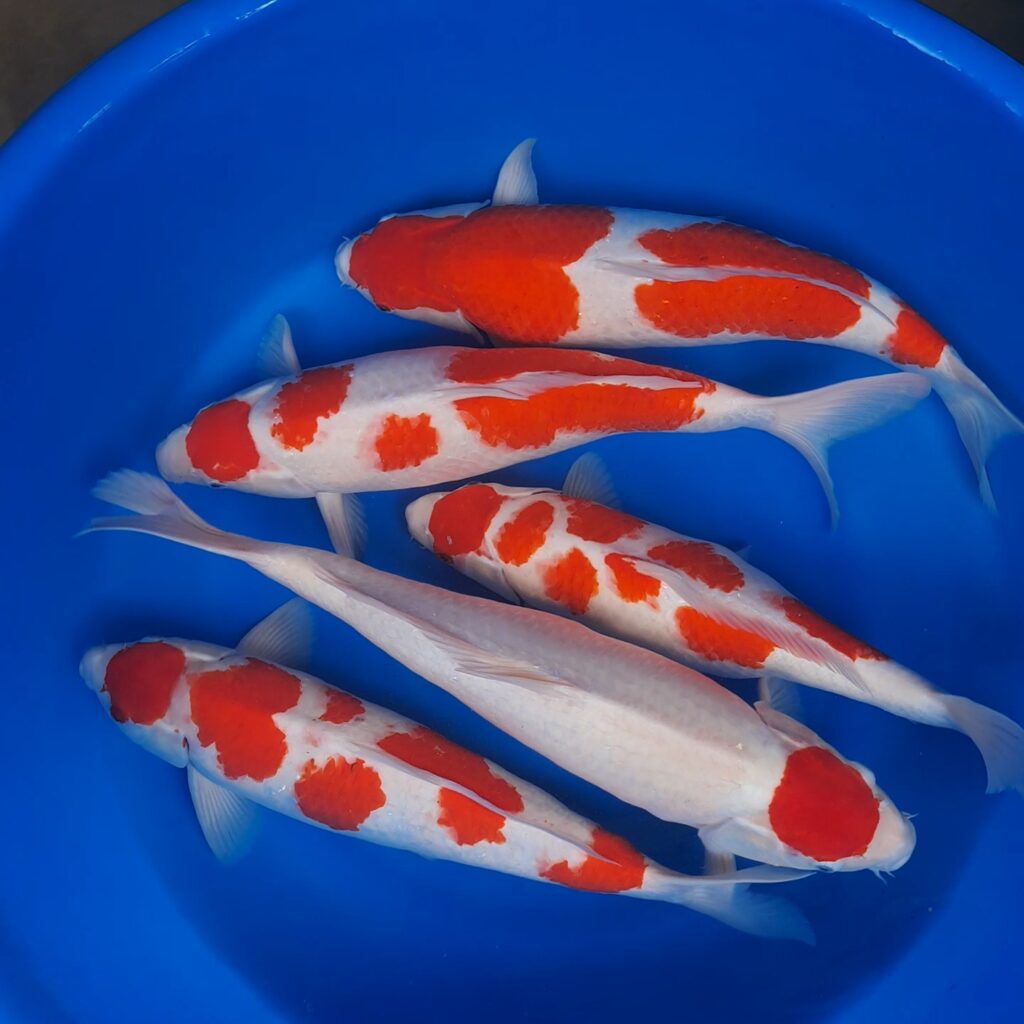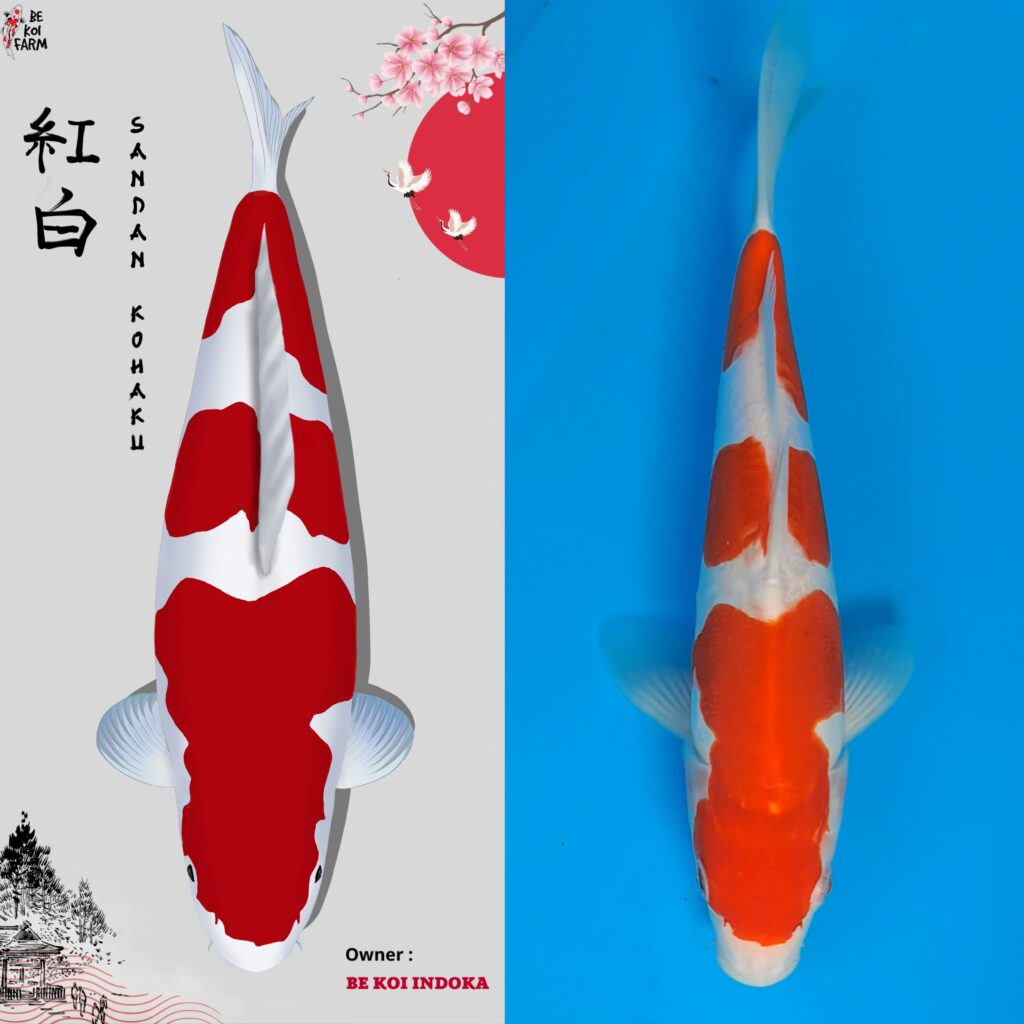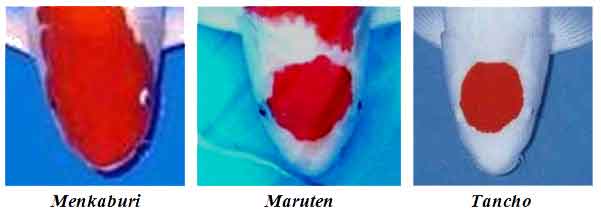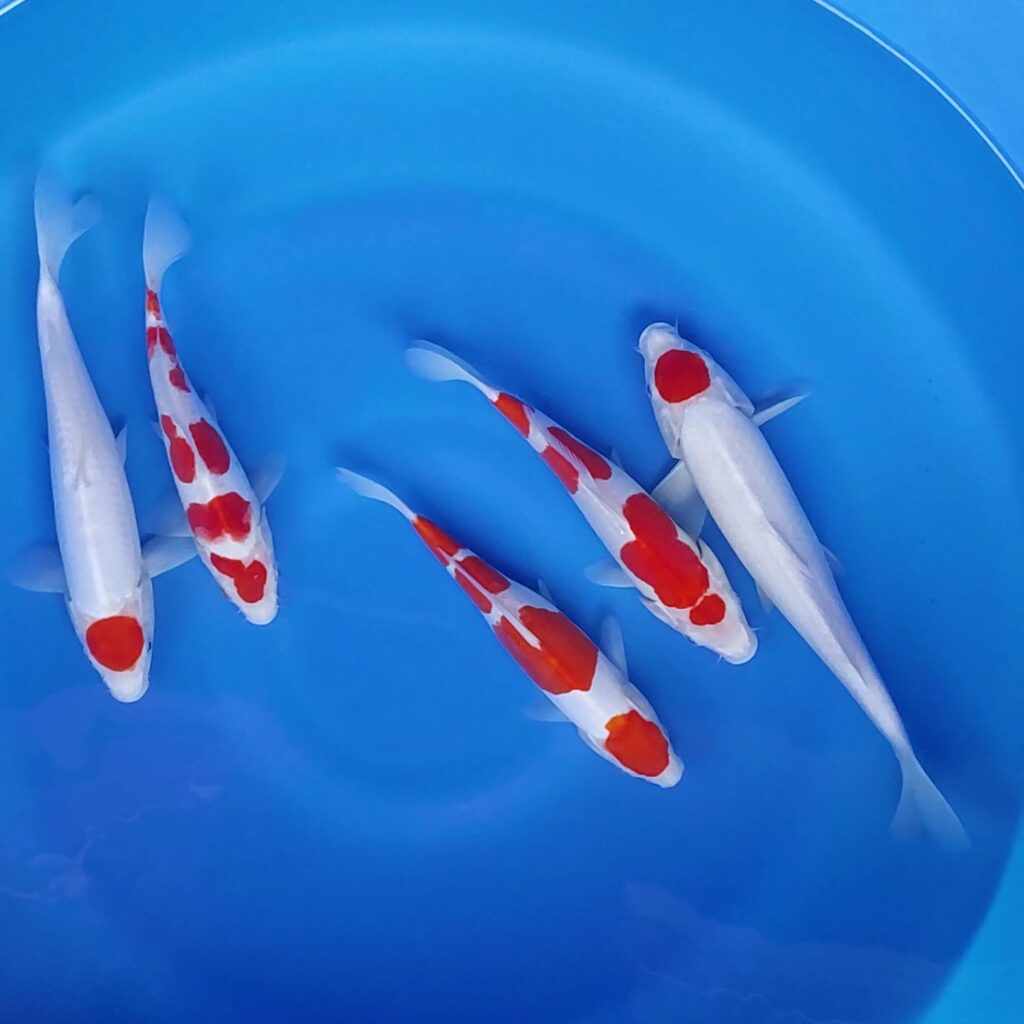
Koi Kohaku – ‘Kohaku’ in Japanese means red and white. Kohaku Koi is a type of koi fish that is always discussed first compared to other varieties. Not only because Kohaku was the first to be discovered, but because Kohaku’s figure is truly special.
With only two colors, Kohaku looks very elegant. The simplicity of the color on its back means that Kohaku will look contrasting when in a crowd of other koi.
In the world of koi there is a parable:
“Keeping Koi begins and ends with the kohaku”, meaning that at first glance, everyone will tend to be attracted to the beauty of the kohaku. Then other varieties such as Showa, Sanke, Ogon etc. are selected. For koi lovers and collectors who have been hunting for various other varieties of koi, in the end their choice will come back to Kohaku. Thus, the Kohaku was actually Koi’s first model.

Around 1820, red and white carps were discovered. Through a mutation process, the koi, which has a red neck, is known in Japan as ‘Hookazuki’ (from the word Kazuku, meaning family) from the black carp parent.
Then a white koi was born from ‘Hookazuki’. The white Koi was then mated with the red Koi (Higoi). From this marriage, the White Koi was born with a red spot on its stomach called ‘Haraka’ (Red Belly). Hara means flat and Aka means red. Then koi were bred with red spots on their gill covers, namely ‘Hoo Aka’ (Red cheeks) or ‘Era Hi’ (Red Gill). Hi means red.
At the end of 1830 the ‘Zukinkaburi’ was born (Zukin means veil, Kaburi means to wear, cover) which is a koi with some red on its head.
‘Menkaburi’ (Men means mask/mask) red koi covering the entire head and ‘kuchibeni’ (Kuchi means red lips and seeds) koi with red lips (lipstick).
Koi is also known as Sarasa (Sarasa means batik cloth, printed cloth) namely with a red and white back.

The white color (shiroji) in kohaku is the most important element. The white color is really white like snow, not yellowish. The quality of the red color in a good Kohaku must be thick and even.
There are two types of red (Hi) in kohaku, namely red based on strong purple and red based on orange (yellowish).
There are many types and patterns of kohaku, including kohaku scales, kohaku doitsu, and kohaku ginrin. The pattern itself has a step-by-step pattern, usually called the sandan, yondan, godan pattern. There are also tanco patterns, kucibeni patterns, straight hi patterns, inazuma patterns, sakura patterns and also other interesting patterns which are usually called character patterns.

©2024 Be Koi Farm – Web by elshobah